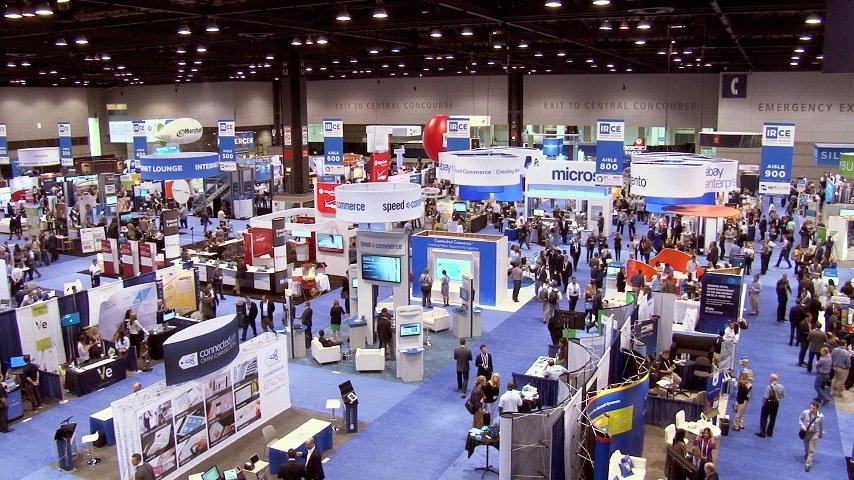Trade shows are powerful platforms for businesses to showcase their products, network with industry professionals, and generate leads. However, with so many exhibitors vying for attention, effective marketing is essential to stand out and achieve success. In this blog, we’ll explore four trade show marketing tips that can help event organizers and exhibitors maximize their impact and return on investment (ROI).
1. Plan a Comprehensive Pre-Show Marketing Strategy
A successful trade show campaign starts well before the event begins. Building anticipation and awareness ensures that your target audience knows about your presence and plans to engage with you at the show.
a. Identify Your Target Audience
Pinpoint the demographic you want to attract. Are you targeting industry professionals, decision-makers, or end-users? Tailor your messaging to their needs and expectations.
b. Leverage Email Marketing
Email remains one of the most effective tools for pre-show promotion.
- Personalized Invitations: Send emails to your existing database, inviting them to visit your booth. Include key details like your booth number and what they can expect.
- Early-Bird Offers: Provide exclusive deals or giveaways for those who schedule appointments in advance.
- Event Teasers: Share highlights of your upcoming product launches, speaker sessions, or demonstrations to build excitement.
c. Use Social Media to Build Hype
Social platforms are ideal for reaching a wider audience and generating buzz.
- Post countdowns and sneak peeks of what you’ll showcase.
- Create a unique hashtag for your booth and encourage followers to use it.
- Collaborate with influencers in your industry to promote your trade show presence.
d. Partner with the Organizers
Collaborate with the trade show organizers to feature your booth in their promotional materials. Many organizers offer sponsorship opportunities or special listings in the event guide and website.
2. Design an Engaging Booth Experience
Your booth is the focal point of your trade show strategy. It needs to capture attention, encourage interaction, and leave a lasting impression.
a. Create a Visually Appealing Display
Invest in professional booth design that aligns with your branding. Consider:
- Eye-catching banners and graphics.
- Interactive screens or videos that showcase your offerings.
- Clear signage to communicate your key messages.
b. Offer Interactive Experiences
Engage attendees with activities that make your booth memorable. Examples include:
- Product Demonstrations: Showcase how your product solves specific challenges.
- Games or Contests: Use gamification to attract visitors and collect leads.
- Hands-On Experiences: Let attendees try your product or service firsthand.
c. Train Your Booth Staff
Your team represents your brand and plays a critical role in engaging visitors. Ensure they are:
- Well-informed about your products and services.
- Approachable and proactive in initiating conversations.
- Equipped to capture leads efficiently using lead-scanning tools or apps.
d. Provide Giveaways That Add Value
Offer promotional items that are useful, unique, and aligned with your brand. Examples include:
- Tech gadgets like USB drives or phone chargers.
- Branded notebooks or reusable water bottles.
- Discount vouchers for your products or services.
3. Maximize Engagement During the Event
Once the trade show is underway, your focus should shift to creating meaningful interactions and ensuring maximum visibility.
a. Host Live Presentations or Demonstrations
Draw crowds to your booth by scheduling live sessions that showcase your expertise or products. Promote these sessions in advance through social media and event announcements.
b. Use Social Media in Real-Time
Leverage social media to keep the buzz alive during the event:
- Post live updates, photos, or videos from your booth.
- Encourage attendees to tag your account and use your event hashtag.
- Run live polls or Q&A sessions to engage your online audience.
c. Network Beyond the Booth
Don’t limit your interactions to your booth. Attend networking events, panel discussions, and workshops to connect with potential clients and partners.
d. Collaborate with Other Exhibitors
Partner with complementary businesses to cross-promote each other’s booths. This approach broadens your reach and fosters goodwill within the industry.
4. Execute a Strong Post-Show Follow-Up Strategy
The trade show doesn’t end when the lights go out. The follow-up phase is crucial for turning leads into customers and measuring the success of your efforts.
a. Organize and Prioritize Leads
After the event, categorize your leads based on interest level and potential value. Use tools like CRM software to track and manage these contacts effectively.
b. Send Personalized Follow-Up Emails
Reach out to your leads promptly while the event is still fresh in their minds. Include:
- A thank-you note for visiting your booth.
- A summary of your product or service’s benefits.
- An invitation to schedule a follow-up call or demo.
c. Share Post-Event Content
Keep your audience engaged by sharing:
- Highlights or key takeaways from the trade show.
- Photos or videos from your booth.
- Success stories or testimonials from attendees.
d. Measure Your ROI
Evaluate the performance of your trade show marketing efforts by analyzing:
- The number of leads generated and their quality.
- Sales or partnerships secured as a direct result of the event.
- Engagement metrics like booth traffic and social media interactions.
Use these insights to refine your strategy for future trade shows.
Conclusion
Trade shows offer unparalleled opportunities to connect with your target audience, showcase your offerings, and drive business growth. By planning a strong pre-show strategy, creating an engaging booth experience, maximizing on-site engagement, and executing an effective follow-up campaign, you can make the most of your trade show investment.
The key is to remain flexible, innovative, and data-driven in your approach. Each event is a learning opportunity to fine-tune your strategies and achieve even greater success in the future.



